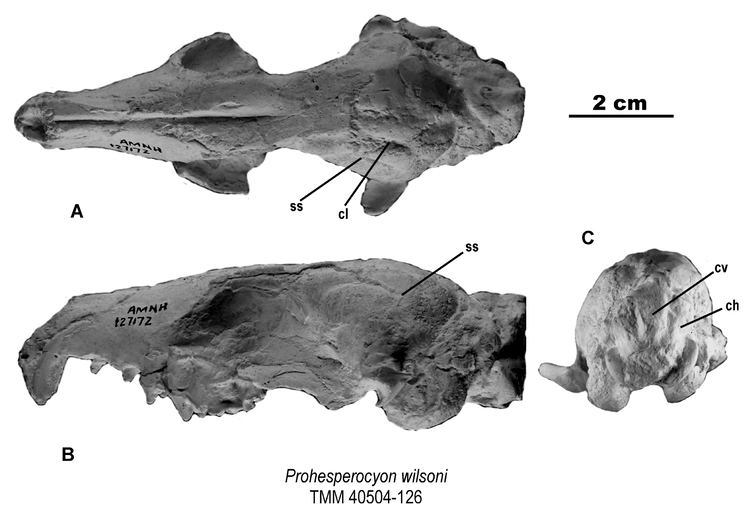Superorder Carnivoramorpha Species †P. wilsoni Phylum Chordata | Family Miacidae Scientific name Prohesperocyon wilsoni Rank Genus | |
 | ||
Similar Hesperocyoninae, Osbornodon, Enhydrocyon, Mesocyon, Leptocyon | ||
Prohesperocyon ("before Hesperocyon)" is an extinct genus of physically small terrestrial carnivoramorphs of the family Miacidae endemic to North America appearing during the Late Eocene around 36.6—36.5 mya (AEO). The time of extinction is unknown.
Contents
Taxonomy
Prohesperocyon was named by Xiaoming Wang, Ph.D. in 1994. It was later verified by K. Munthe in 1998, Wesley-Hunt in 2005, and Werdelin 2006, P. D. Polly et al. p. 1023. Only a single species, Prohesperocyon wilsoni, is recognized and considered the type or origin species.
Body mass
One specimen was examined by Legendre and Roth for body mass. The specimen was estimated to weigh 2.21 kg (4.9 lb).
Fossil distribution
P. wilsoni was unearthed at the Airstrip (TMM 40504) site, Presidio County, Texas dating between 36.6—36.5 million years ago. This fossil species bears a combination of features that definitively mark it as a Canidae, including teeth that include the loss of the upper third molar (a general trend in canids toward a more shearing bite), and the characteristically enlarged bony bulla (the rounded covering over the middle ear). Based on what we know about its descendants, Prohesperocyon likely had slightly more elongated limbs than its predecessors, along with toes that were parallel and closely touching, rather than splayed, as in bears.
